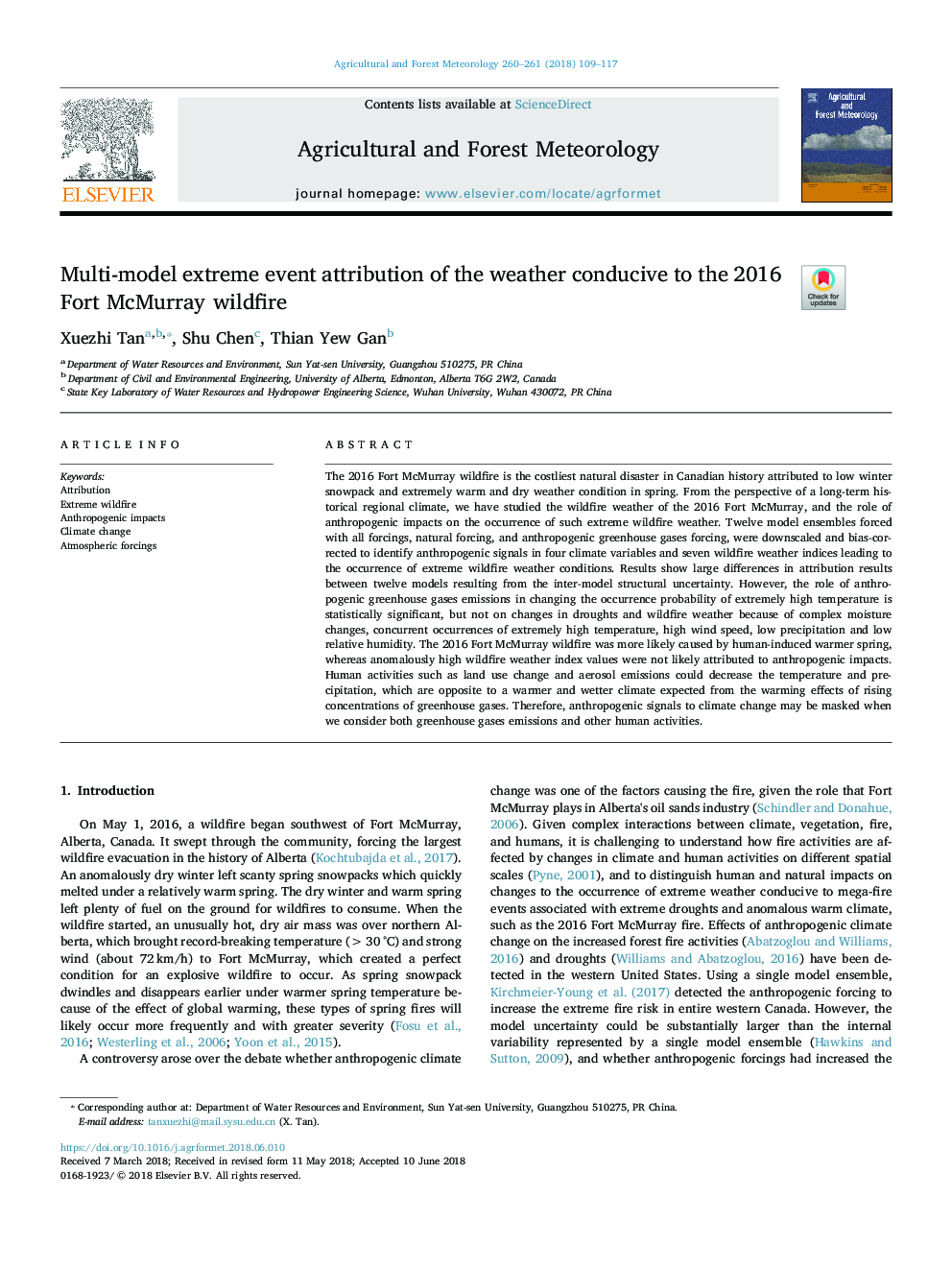| Article ID | Journal | Published Year | Pages | File Type |
|---|---|---|---|---|
| 6536606 | Agricultural and Forest Meteorology | 2018 | 9 Pages |
Abstract
The 2016 Fort McMurray wildfire is the costliest natural disaster in Canadian history attributed to low winter snowpack and extremely warm and dry weather condition in spring. From the perspective of a long-term historical regional climate, we have studied the wildfire weather of the 2016 Fort McMurray, and the role of anthropogenic impacts on the occurrence of such extreme wildfire weather. Twelve model ensembles forced with all forcings, natural forcing, and anthropogenic greenhouse gases forcing, were downscaled and bias-corrected to identify anthropogenic signals in four climate variables and seven wildfire weather indices leading to the occurrence of extreme wildfire weather conditions. Results show large differences in attribution results between twelve models resulting from the inter-model structural uncertainty. However, the role of anthropogenic greenhouse gases emissions in changing the occurrence probability of extremely high temperature is statistically significant, but not on changes in droughts and wildfire weather because of complex moisture changes, concurrent occurrences of extremely high temperature, high wind speed, low precipitation and low relative humidity. The 2016 Fort McMurray wildfire was more likely caused by human-induced warmer spring, whereas anomalously high wildfire weather index values were not likely attributed to anthropogenic impacts. Human activities such as land use change and aerosol emissions could decrease the temperature and precipitation, which are opposite to a warmer and wetter climate expected from the warming effects of rising concentrations of greenhouse gases. Therefore, anthropogenic signals to climate change may be masked when we consider both greenhouse gases emissions and other human activities.
Related Topics
Physical Sciences and Engineering
Earth and Planetary Sciences
Atmospheric Science
Authors
Xuezhi Tan, Shu Chen, Thian Yew Gan,
